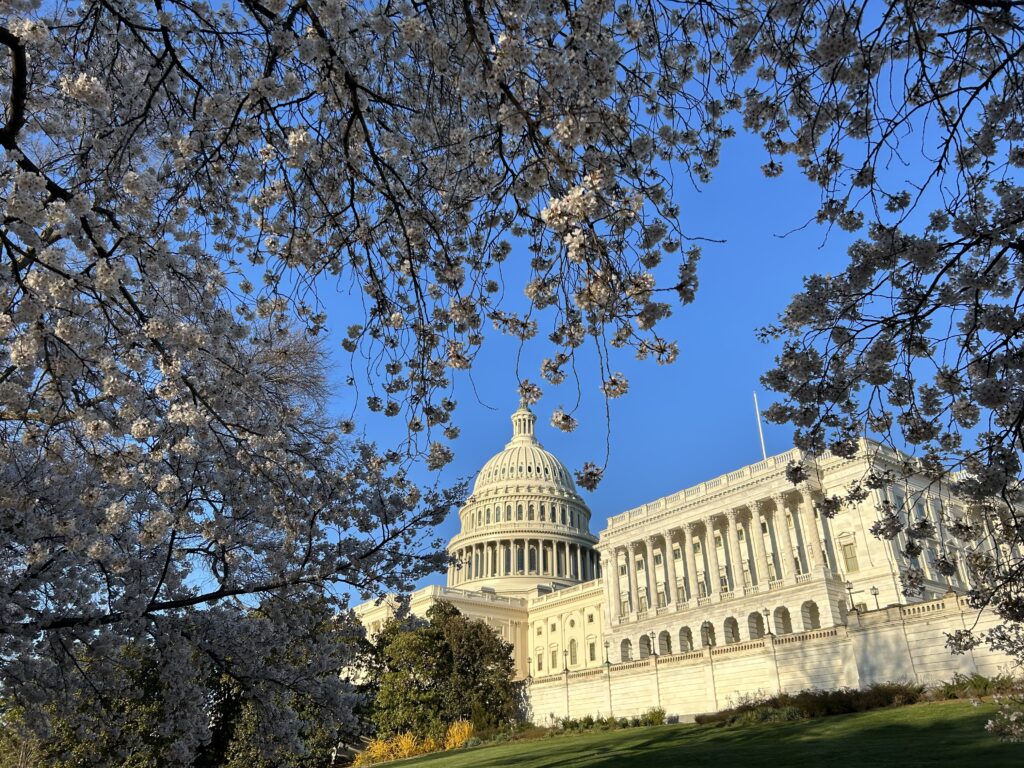As new and returning governors and legislators prepare to take office, Transportation for America urges them to consider key transportation policy recommendations in this transition memo.
Come January, thousands of new and returning elected officials across the country will return to legislative and executive offices, with a task to represent their constituents and make responsible decisions. If they want to ensure they get transportation right, we have three major recommendations to help newly elected and returning governors and state legislators ensure that communities have access to a safe, sustainable, and well-connected transportation system.
Fix it first
Despite major infusions of federal funds from the Infrastructure Investment and Jobs Act, states are still not prioritizing responsible management of their transportation assets. We are falling behind when it comes to maintaining the condition of our roadways, perpetuating an expensive backlog of roads in poor condition that will cost significantly more to repair in the future. As a result, drivers are forced to travel over miles of deteriorating bridges and highways, which can decrease fuel efficiency, damage their vehicles, and expose them to increased safety hazards.
To prevent this problem from worsening, states need to assess whether they have sufficient funding to maintain any new infrastructure they plan to build while simultaneously being able to make progress on existing infrastructure. Setting and implementing aggressive repair goals, as well as publicly tracking them, creates visibility for constituents and bolsters the case for increasing funding for repair. The pressure to build more highways is strong and may sound more glamorous than maintenance, but an approach that values fixing what we have will deliver on high standards of repair, and key social, environmental, and economic outcomes.
Build more transit and more housing near it
Public transportation offers numerous benefits to communities, from saving hundreds of dollars a month by not having to maintain a private vehicle, to expanding economic growth for localities. Proper investments in transit can reap these benefits and more through creating more livable and efficient communities. However, states have often left the responsibility of managing transit services to local governments, creating an imbalanced approach to transit planning and spending. State-level funding for transit services is just as imperative as it is to building out highway systems, and should be treated as such.
The benefits of public transit can be further enhanced when housing access for all incomes is built near transit hubs. This allows individuals the opportunity to live in well-connected communities without the burden of owning a car. Current approaches to zoning encourage building single-family homes rather than allowing developers to respond to the market demand. States can address this by updating zoning codes to allow cities and developers to respond to market demand and build more housing near transit, rather than according to a decades-old zoning ordinance.
Build Complete Streets in all communities
We are in the midst of an alarming increase in pedestrian fatalities, with the number of people who are struck and killed or injured while driving reaching record highs in 2022. This epidemic continues to worsen because our nation’s streets are designed to move cars quickly, which comes at the expense of keeping people safe. Complete Streets offers an alternative approach to planning, building, and maintaining streets that provides safe access for all users, including pedestrians, motorists, bicyclists, and transit riders of all ages and abilities. This approach enables greater access for communities and increases economic activity, all while avoiding the costs associated with traumatic roadway crashes.
State DOTs can create and adopt Complete Streets policies that are designed to respond to your community’s unique needs and dedicate funding, staff resources, and accountability measures for its implementation. Historically, states have considered active transportation initiatives as local issues. Yet some of the most dangerous roads for walking and biking are owned and managed by state DOTs. State leadership in designing, funding, and maintaining active transportation infrastructure can make a big difference for improved safety and mobility outcomes.
While these recommendations stand on their own as common sense policy, it’s important that your politicians know that these policies are supported by you, their constituents. That’s why we strongly encourage you to share our transition memo yourself with your newly elected and re-elected officials. Doing so helps ensure that they know what matters most and how they could make sure their offices’ transportation policy would have the greatest impact for your community.
If you’re a new or returning legislator, we encourage you to review and share our recommendations to guide state transportation efforts memo.
The post Three transportation policy recommendations for state legislators and governors appeared first on Transportation For America.










